
Norwich City Hall Undercroft 8-26 April 2015
an installation comprising three groups of four paintings
1.100 x 1.550
Japanese black ink and gold leaf on paper
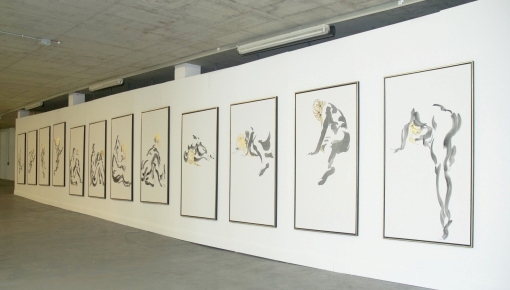
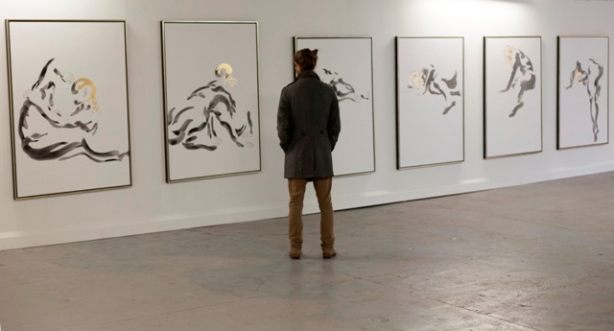

The year 2011 was the four hundredth anniversary of the completion of the King James Bible, the first translation of The Bible into English. This is regarded as not only a religious and cultural milestone but also a significant representation of the development of the English language. To celebrate this event the National Theatre in London staged extended readings of sections of The Bible. I was invited to a reading called The Book of Kings which was the whole story of the life of King David: Samuel I, Samuel II, Kings I and Kings II.
I was struck not only by the story's epic and eventful narrative but also by its intuitive function. The life of King David is not simply the true story of an important ruler but a narrative that encompasses every aspect of masculine experience. David is first encountered as a shepherd boy. His role at this point is clearly childish and servile. We see him grow rapidly in strength and physical skill to the point that he is ready to match and dominate other adult men in his conflict with Goliath. Immediately after this event, his relationship with Jonathan shows him developing as an emotionally mature adult.
His story is a long physical, political and intellectual struggle against the enemies of his tribe and against his own family until he achieves high status and control. We are shown his struggle to rise above the limitations of his relationship with his father and uncles, and eventually to overcome the Philistines.
Along the way, he has many wives and children and is seen constantly to be trying to balance the problems of his domestic life against his duties as a leader. Most significantly, The Bible gives us insights to his emotional response to both his adversities and his successes. We are shown, with a candour and completeness, a whole gamut of male emotional experience that has subsequently been erased from our culture. Joy, love and grief stand out from the story as emotional responses that are celebrated within his story but which are now discouraged in men.
He is a true archetype and an example from whom we may gather wisdom and guidance.
Three moments from this saga cried out for expression in this new installation of graphic works, David Danced, David and Jonathan and David Wept. They will comprise the first parts of an extended response to this great philosophical and humanitarian example of manhood.
The images are made with Japanese ink and gold leaf on paper. Each image is 1.100 x 1.550. There are three groups of four paintings.
The work is inspired by the idea and discipline of Japanese ink painting: the idea that one should practice and practice gestures and shapes until they can be executed with ease and spontaneity. In addition to numerous crayon studies, these images were repeated again and again in ink until an easy and expressive representation of the image was found.
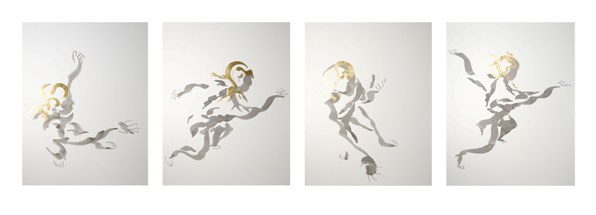 David Danced
David Danced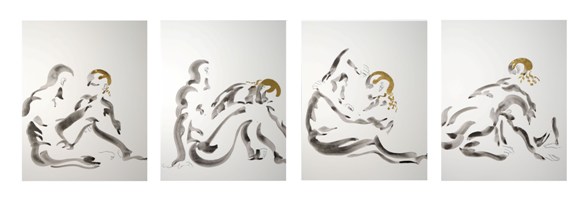 David and Jonathan
David and Jonathan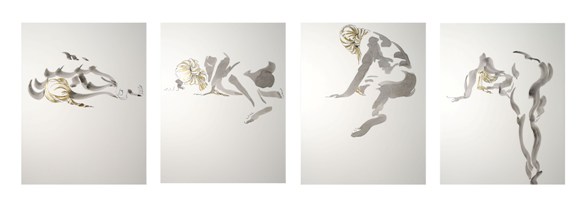 David Wept
David Wept
All images © Tim Reed